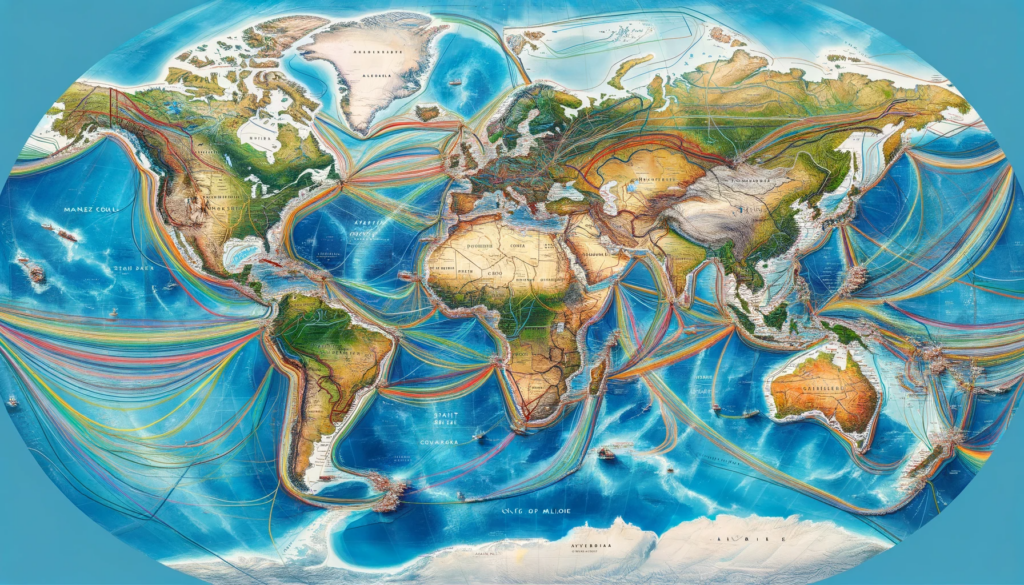Exploring Major Shipping Routes
In the fast-paced world of global trade and transportation, the intricate web of major shipping routes plays a pivotal role in connecting continents, countries, and markets. These maritime highways, also known as shipping lanes, facilitate the movement of goods and cargo essential for international trade. In this article, we will delve into the fascinating world of major shipping routes around the globe, exploring their significance in the world of transportation and global trade.

The Vital Role of Major Shipping Routes in Global Transportation
Major shipping routes, often referred to as trade routes or sea routes, are the lifelines of international trade. These well-established pathways are carefully chosen to optimize the transportation of goods between continents and countries. The efficiency and accessibility of these routes greatly influence the global economy, as they facilitate the movement of vital resources, raw materials, and finished products.
The Top 5 Busiest Shipping Routes
Among the numerous shipping routes across the world, five stand out as the busiest and most critical for global trade. Let’s take a closer look at these major shipping routes:
- The Panama Canal Route: Connecting the Atlantic Ocean to the Pacific Ocean, the Panama Canal serves as a crucial shortcut for vessels traveling between North and South America. This man-made wonder reduces the need for ships to circumnavigate the treacherous waters of Cape Horn.
- The Suez Canal Route: Situated in Egypt, the Suez Canal is the shortest sea route between Asia and Europe. It links the Red Sea to the Mediterranean, offering a vital passage for maritime trade between the Middle East, Asia, and Europe.
- The Strait of Malacca: This narrow waterway between the Malay Peninsula and the Indonesian island of Sumatra is a vital route for trade between Asia and the rest of the world. It is one of the busiest shipping lanes globally, accommodating a vast volume of cargo.
- The English Channel and North Sea: These routes connect the ports of Northern Europe, including the United Kingdom, to mainland Europe. They support international trade by offering the fastest way for vessels to move goods between the North Sea and the Atlantic Ocean.
- The North Sea and Baltic Sea: This route facilitates trade in Northern Europe, connecting countries such as Germany, Sweden, and Russia to the broader European market.
Global Trade Depends on Shipping Routes
The world’s most popular trade routes are essential for the smooth functioning of the global economy. They serve as commercial shipping highways, carrying everything from consumer goods to raw materials and energy resources. International trade heavily relies on these routes, which act as crucial trade checkpoints.
Reducing Shipping Emissions and Environmental Impact
While major shipping routes support international trade, they also contribute to shipping emissions and environmental concerns. Efforts are underway to make these routes more sustainable, reduce emissions, and minimize the environmental impact of the shipping industry.
Conclusion
In the complex web of global trade and transportation, major shipping routes are the arteries that keep the world economy pulsating. They connect continents, facilitate the movement of goods, and support international trade by offering the fastest and most efficient means of transportation. Understanding these vital routes is key to comprehending the interconnectedness of the global economy and the role of the maritime industry. As we navigate the seas of global trade, these routes remain essential for the flow of commerce, making them a critical link in the chain of global prosperity.

